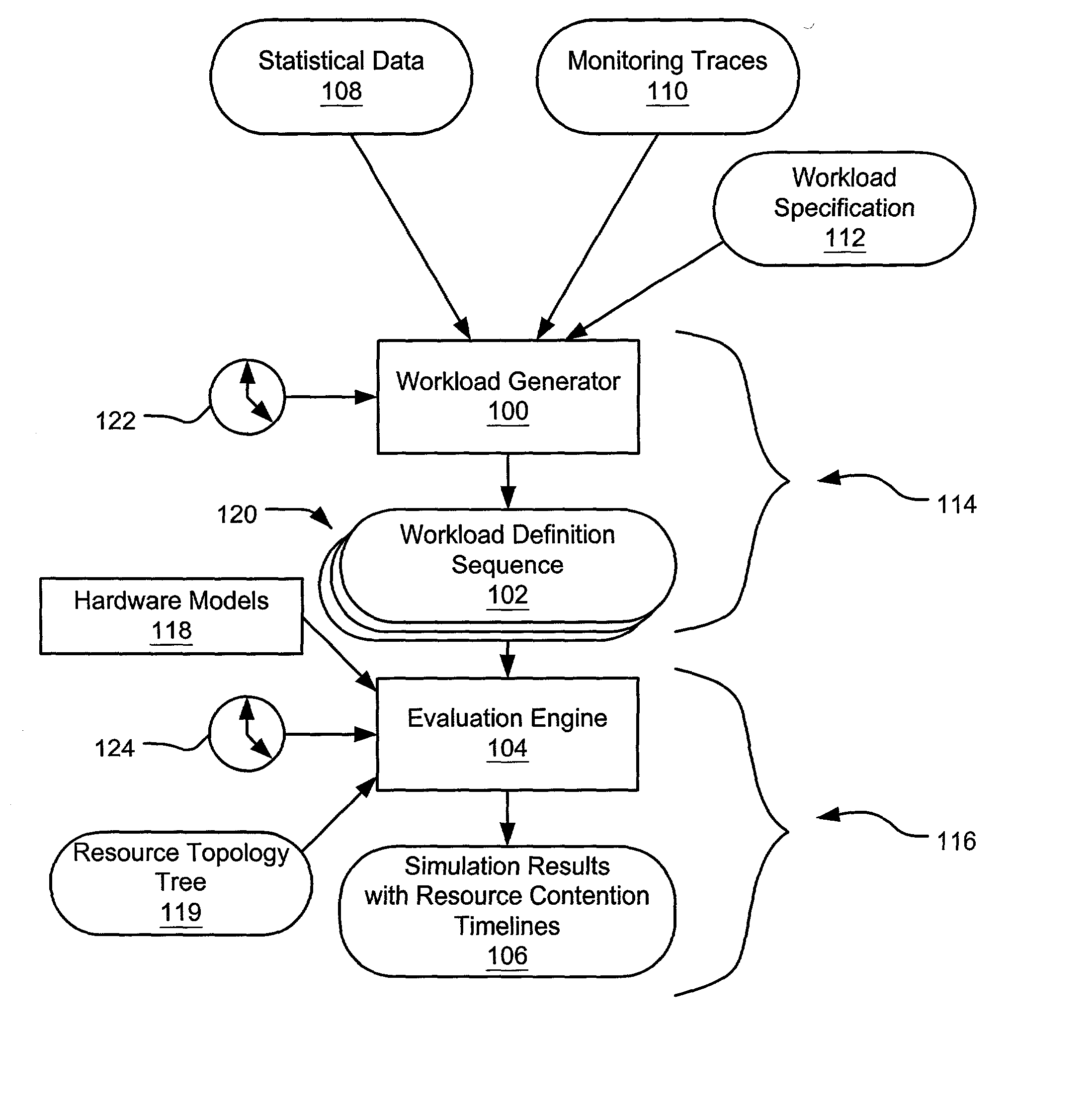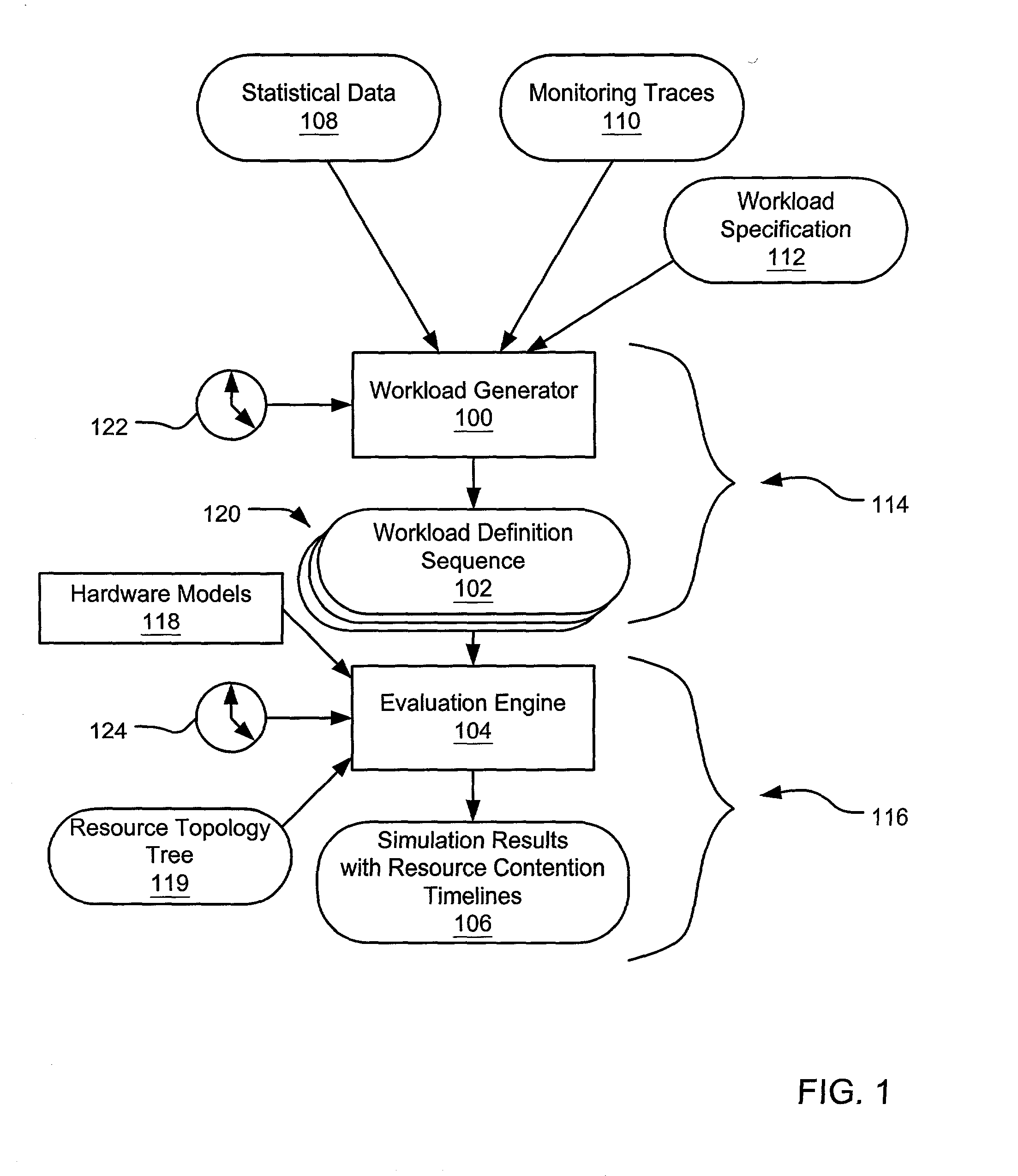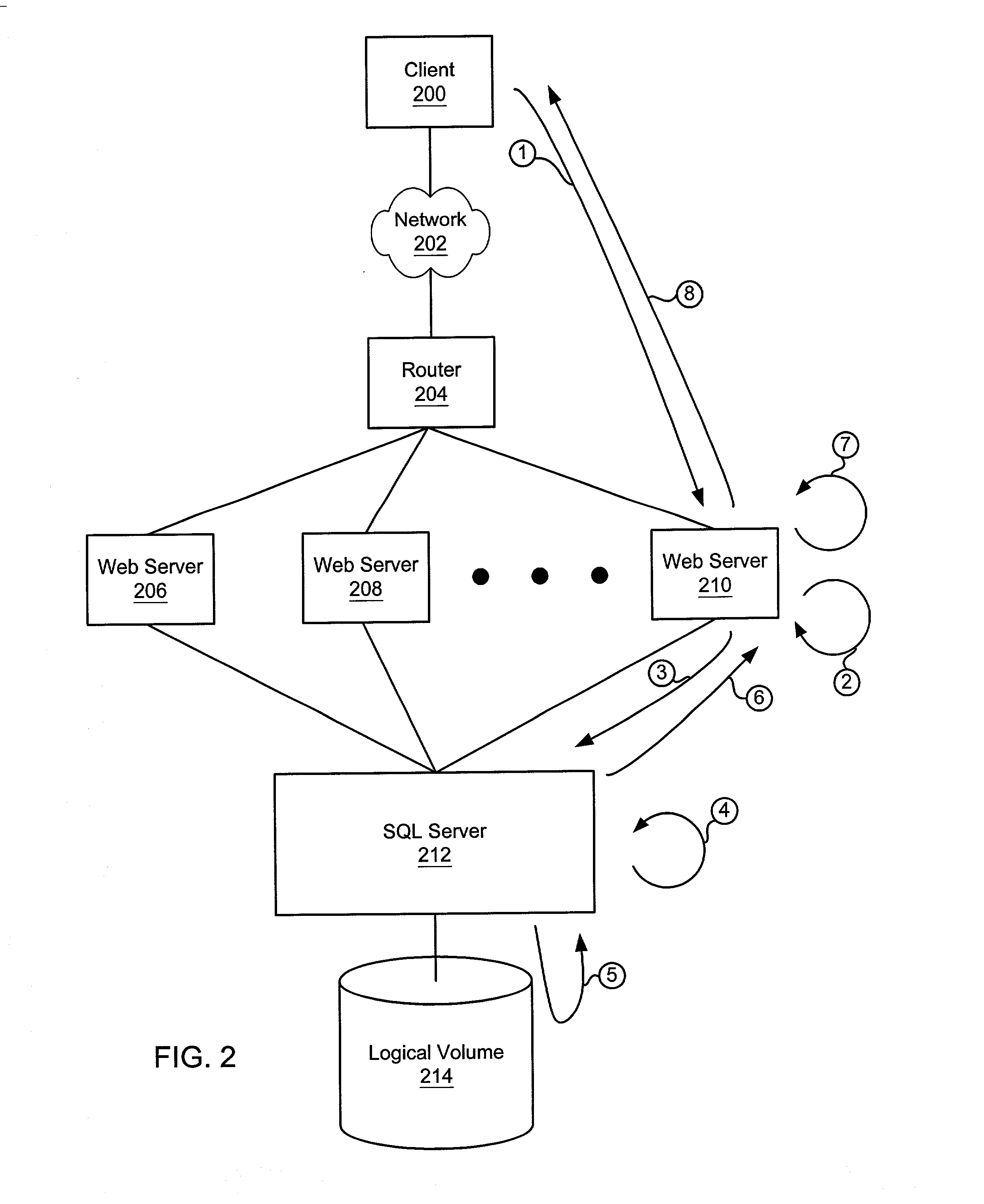Evaluating hardware models having resource contention
a hardware model and resource technology, applied in the field of computer system performance simulation, can solve problems such as resource being subject to events, resource performance exceeding the capacity of resource, and insufficient model of system resource us
- Summary
- Abstract
- Description
- Claims
- Application Information
AI Technical Summary
Benefits of technology
Problems solved by technology
Method used
Image
Examples
Embodiment Construction
[0027] During development of a net-based service application, it is beneficial to simulate the operation of the application within a model of the overall system in which it is expected to execute. For example, an e-commerce retail application that allows consumers to shop for a company's products over the Internet will operate in a system including various web servers, routers, communication links, database servers, clients, power supplies, etc. Simulation of the system allows a developer to understand how his or her design decisions impact the system's performance in real-world conditions. Simulation of the system can also assist a system user in making hardware purchase and system architecture decisions and assist a system administrator to identify bottlenecks and to anticipate performance problems at given load levels.
[0028] Such bottlenecks and performance problems may be attributable to resource contention within the system. For example, at high system load levels, if more req...
PUM
 Login to View More
Login to View More Abstract
Description
Claims
Application Information
 Login to View More
Login to View More - R&D
- Intellectual Property
- Life Sciences
- Materials
- Tech Scout
- Unparalleled Data Quality
- Higher Quality Content
- 60% Fewer Hallucinations
Browse by: Latest US Patents, China's latest patents, Technical Efficacy Thesaurus, Application Domain, Technology Topic, Popular Technical Reports.
© 2025 PatSnap. All rights reserved.Legal|Privacy policy|Modern Slavery Act Transparency Statement|Sitemap|About US| Contact US: help@patsnap.com



